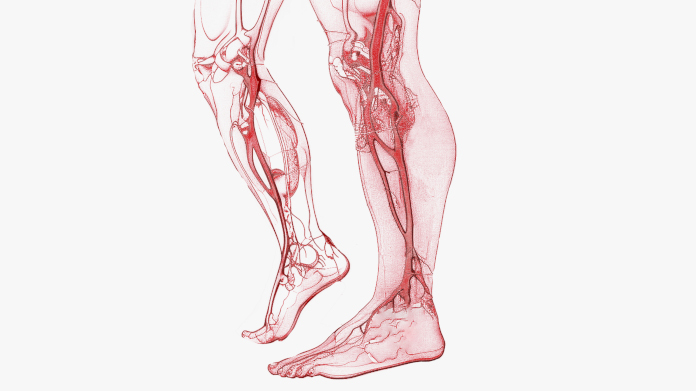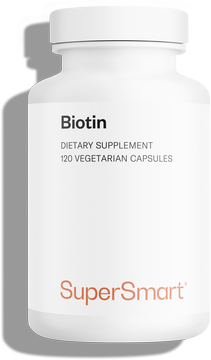Red vine: what are the dangers and contraindications?
A source of antioxidants and a natural veinotonic that has been used for thousands of years, red vine is particularly recommended in cases of heavy legs, varicose veins or haemorrhoidal attacks. But are there any dangers or contraindications?

Reminder of the benefits of red vine (Vitis vinifera)
Definition of red vine
A shrub native to Asia Minor, red vine (Vitis vinifera) has been widely used since Antiquity.
It was particularly valued and cultivated by the Egyptians and Greeks.
In addition to its use as a food, the red vine soon became renowned for its medicinal properties, in particular its antioxidant effects and its benefits for blood circulation (1).
Benefits of Vitis vinifera: antioxidant and excellent for circulation
To describe its health benefits more precisely, red vine:
- is packed with polyphenols that help protect cells and tissues against oxidative stress (2).
- contains bioflavonoids, which help return blood from the lower part of the body to the heart, and thus help to combat venous insufficiency. They act by strengthening blood vessel walls (by stabilising structural proteins such as collagen) and reducing their permeability, which limits fluid leakage. Red vine treatments are therefore valued in cases of heavy legs, varicose veins, haemorrhoidal attacks, calf cramps, oedema, itching and other symptoms associated with venous insufficiency (3-4).
- helps blood vessels to dilate, thereby contributing to the maintenance of healthy blood pressure and good cardiovascular health.
Red grapevine is therefore commonly used in antioxidant food supplements that are good for blood circulation (such as the synergistic Triple Vino Circulation formula, which combines 3 parts of the grapevine rich in polyphenols: red grapevine leaves, grape seeds and grape marc).
Dangers, contraindications and precautions for red vine
A healthy remedy with a few contraindications
The astonishing thing about red vine is that, according to current research, it presents no danger to people in good health (excluding pregnant or breastfeeding women).
However, you should be aware that the oligoanthocyanidins present in red vine extracts may interact with anticoagulant and blood-thinning medicines, supplements, plants and herbal teas.
You should therefore seek the advice of a healthcare professional if you are taking any of these before taking a course of red vine.
Some people may also be allergic to red vine (although this is rare).
What are the side effects of taking red vine?
A few rare, mild, undesirable side effects have been noted during red vine cures, such as:
- nausea;
- digestive problems;
- headaches;
- and dizziness.
If you experience any of these symptoms during a course of treatment, take a break.
If the symptoms disappear, they may have been due to your Vitis vinifera food supplement.
When can I expect to see results from red vine?
The recommended course of treatment is 12 weeks.
It may take up to 4 weeks to feel the benefits.
Can I take a red vine supplement every day?
If there are no contraindications, it is generally possible to take a red vine supplement on a daily basis, with breaks for a few weeks during the year, for example.
Be sure to follow the dosage instructions on the product label.
SUPERSMART ADVICE
References
- GHEDIRA, K., GOETZ, P., et LE JEUNE, R. Vitis vinifera var. tinctoria L.: vigne rouge Ampelidaceae (Vitaceae). Phytothérapie, 2012, vol. 10, p. 257-262.
- SCHNEIDER, Ernst, VON DER HEYDT, Holger, et ESPERESTER, Anke. Evaluation of polyphenol composition in red leaves from different varieties of Vitis vinifera. Planta medica, 2008, vol. 74, no 05, p. 565-572.
- FOSHATI, Sahar, NOURIPOUR, Fatemeh, SADEGHI, Erfan, et al.The effect of grape (Vitis vinifera) seed extract supplementation on flow-mediated dilation, blood pressure, and heart rate: A systematic review and meta-analysis of controlled trials with duration-and dose-response analysis. Pharmacological Research, 2022, vol. 175, p. 105905.
- https://www.vidal.fr/parapharmacie/phytotherapie-plantes/vigne-rouge-vitis-vinifera-tinctoria.html
Keywords
7 Days
Delivery is prompt and I never saw a…
Delivery is prompt and I never saw a quality problem with the manufacturing. It is not possible to assess efficacy on a personal basis, since too many factors come into play. Efficacy can only be assessed statistically with a sufficient number of cases.
Roger De Backer
8 Days
I collaborates with the Supersmart…
I collaborates with the Supersmart more than 10 years. Every thing is going good. Quality of the things is good. Delivery comes in time. Five stars definitely !!!
Oleksiy
8 Days
All good
Simple, frictionless site, easy ordering, good delivery updates and execution.
Chris Robbins
10 Days
I feel better
I feel better
Peter Ammann
10 Days
Prompt delivery
Prompt delivery
JAKUB Radisch
11 Days
My new go-to for top quality supplements!
I am buying more and more of my supplements from this superb, high quality company. Cannot recommend it enough. Plus, excellent customer service with a quick, helpful team and speedy deliveries. Highly recommend Supersmart!
Cecilie H.
15 Days
SUPERSMART WHAT ELSE👍
SUPERSMART WHAT ELSE👍
DIEDERLE Christophe
18 Days
Excellent quality products with…
Excellent quality products with innovative formulas, as someone who has been suffering with acid reflux, these supplements have been lifesavers.
Oriana Moniz
18 Days
high quality supplement!
high quality supplement!
GALANT
18 Days
Good service prompt delivery
Good service prompt delivery
Mrs Marcella Reeves
23 Days
I like your clear explanation
I like your clear explanation. And how to make a choice of products for a specific health problem
Ingrid
30 Days
Great product and it arrives quickly.
Great product and it arrives quickly.
SOMMARIVA Gianni
31 Days
Excellent products and fast service.
Excellent products and fast service. What do we need more?
Margarida
35 Days
The variety of products is amazing
The variety of products is amazing, the offers are good and the sending is very fast. I just miss having a bit more of guidance about combinations, possible interactions, etc.
Maria Angeles Verdu
36 Days
It was quick
It was quick.
Timo Antero






